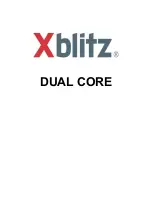
34
EV & WHITE BALANCE
EV (EXPOSURE COMPENSATION)
Your camera adjusts the exposure of each scene automatically. However, if the subject is very dark, or very
bright, you may override the camera’s automatic exposure determination to make the subject brighter or darker.
This is called EV compensation.You can select the EV compensation you wish by using or . And press the
OK
button.
Correction range: 9 steps
(-2.0EV to +2.0 EV in 0.5 EV increments)
Subjects for Which Exposure Adjustment is Particularly Effective
Positive (+) compensation
Backlit portraits
Very bright scenes (such as snowfields) and highly reflective subjects
Shots made up predominantly of sky
Negative (-) compensation
Spotlit subjects, particularly against dark backgrounds
Scenes with low reflectivity, such as shots of pine trees or dark foliage
WHITE BALANCE (SELECTING THE LIGHT SOURCE)
Your camera adjusts the white balance of each scene automatically. However, the images that your camera
captures will appear different under lighting conditions (sun, shade, fluorescent, tungsten lights). Unlike your
eyes, which can easily adjust to differentiate between lighting types. Under some lighting condition, the image
may appear in strange shades. If that occurs, you may change the white balance setting by specifying a lighting
condition (temperature) most appropriate for your scene. You may select the appropriate white balance by
using or , and press the
OK
button.
:Automatic adjustment
: Shooting in incandescent light
: Shooting fluorescent lamps
: Shooting outdoors in fine weather
: Shooting in shade
For better performance results, it is recommended to use “
” Flash-off mode when the white balance setting is
.
Содержание Q1 DIGITAL
Страница 1: ......
Страница 11: ...11 ATTACHING THE STRAP ...
















































